#Dyed Wool
Text
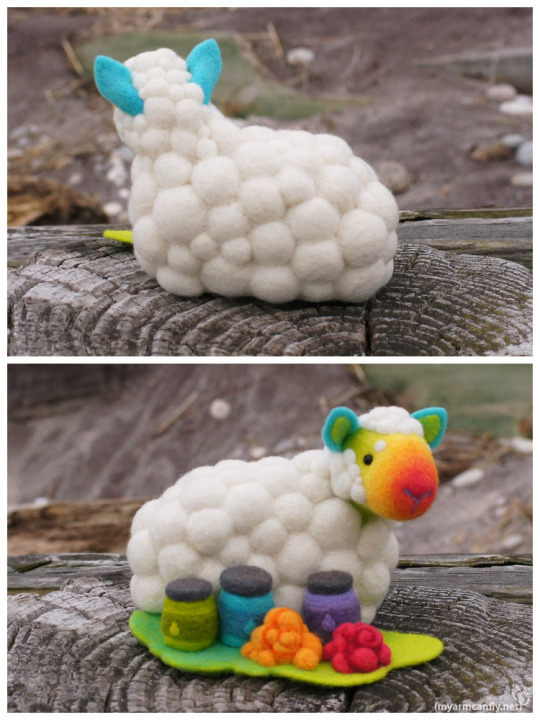
Shaved Ice the Sheep
After my last con, I needed a quick little palette cleanser personal project - I love making things for other people, but sometimes you need to make something for yourself! I decided that what I wanted was a little friend to sit up on top of the Color Machine, and the sheep from the logo design felt like a perfect choice. She’s accompanied by dye bottles and a couple little balls of wool, and has a magnet in her base to help her stay steady up on top.
This was a personal piece and is not for sale, but my commissions are currently open and I’d love to talk ideas with anyone who wants to add a felted friend to their world!
#needle felting#fiber art#art doll#crafting#art toys#creature design#artists on tumblr#handmade#sheep#hand dyed#dyed wool
253 notes
·
View notes
Text

I just wanted to share this because I’ve been learning how to dye my own wool for my felting projects and I’m really happy with how it’s turning out so far. Im slowly getting better at carding it, and have been getting it off my own sheep which feels really nice. Resourceful even.
7 notes
·
View notes
Text
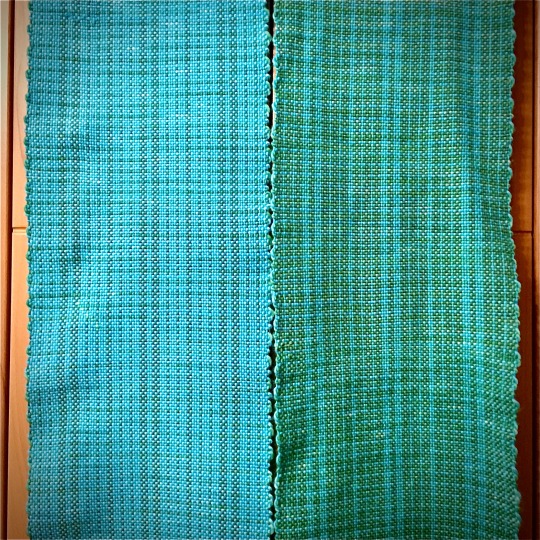
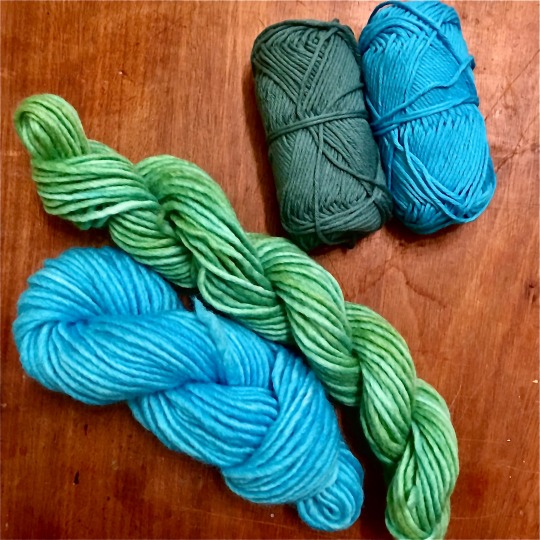
Wove some matching scarves for my dad and step-mom!! They’re a perfect reverse of each other as i used the same pattern and the same wool for both projects, which I’ve dyed myself again. Only thing i don’t like are the edges, as they’re quite uneven, but it couldn’t be helped with the pattern :/
#finished project#weaving#I die#loom weaving#dyed wool#textiles#diy#selfmade#textile work#scarf#springweaver
2 notes
·
View notes
Text
Scarf woven with my handspun- Tempest, which you may recognise from a previous video
#crafts#wool#handspun#yarn#spinning#fibre arts#blending fibre#how its made#hand dyed#weaving#rigid heddle weaving#rigid heddle loom
5K notes
·
View notes
Text
Barn husbands if Bay hadn't directed AoE and DotM:
#optimus prime#cade yaeger#barn husbands#no it's not them but it should've been!!!#dyed in the wool conservatives should be banned from transformers
156 notes
·
View notes
Text
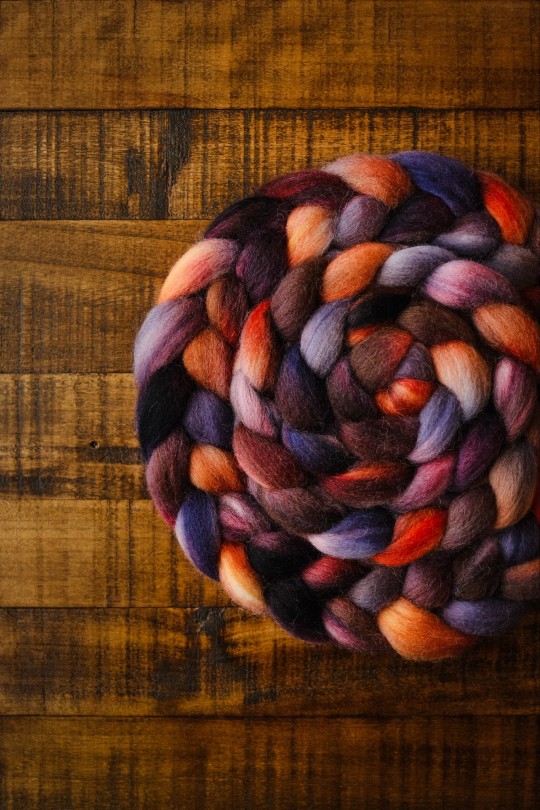

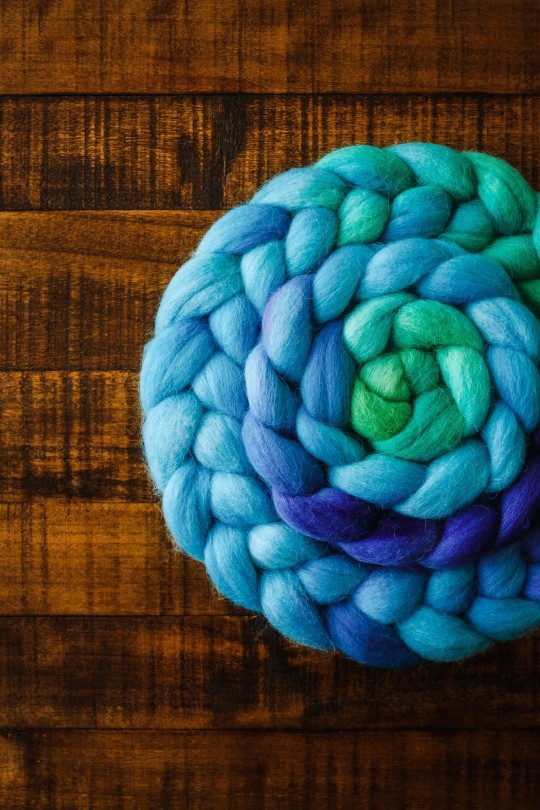
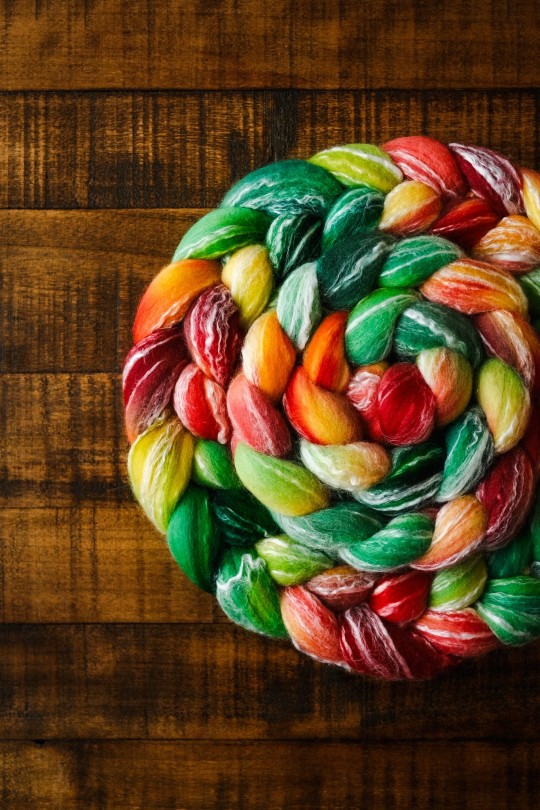


Here are the results from my week of dyeing!! I shared the last two photos already but I wanted to post them all as a group. The first four (plus a couple more) are available in my shop right now ✨ and if you buy fiber from me PLEASE tag me in any photo posts of your finished yarn once (if) you spin it, I need to see it 👀
#spinning yarn#spinning fiber#wool#dyeing#hand dyed#hand dyed wool#hand dyeing#stuff you can buy from me#allonsybadwolf#my dyeing
191 notes
·
View notes
Text
Finally picked a project to make with my Haunted colorway, so I had an excuse to cake them.


And then also broke down/remembered to buy a black light to take pictures...
Did I mention that Haunted is UV reactive??
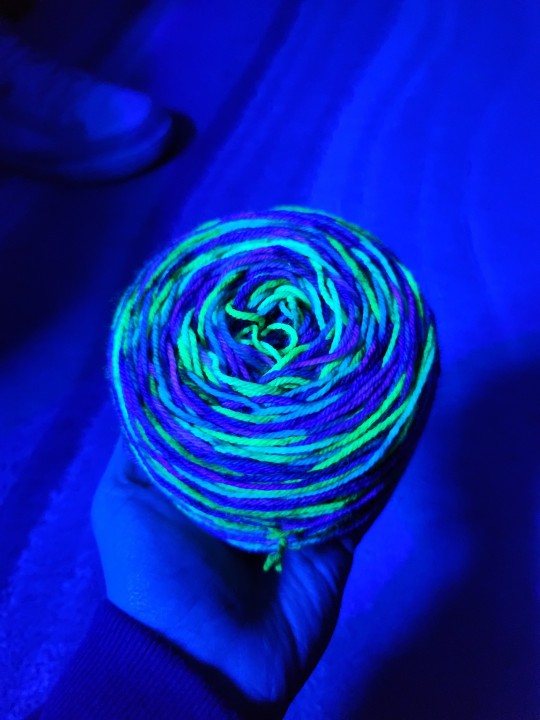

#crafts#crochet#crochetblr#fiber arts#hand dyed yarn#knitblr#knitting#wool#yarn#small business#mystic bat studio#mystic bat shop#mystic bat yarn#dis bich glows#you cant be haunted if you dont glow#its a rule#glowing yarn#uv reactive#uv reactive yarn#neon yarn#neon dye#halloween colors#spoopy
289 notes
·
View notes
Text
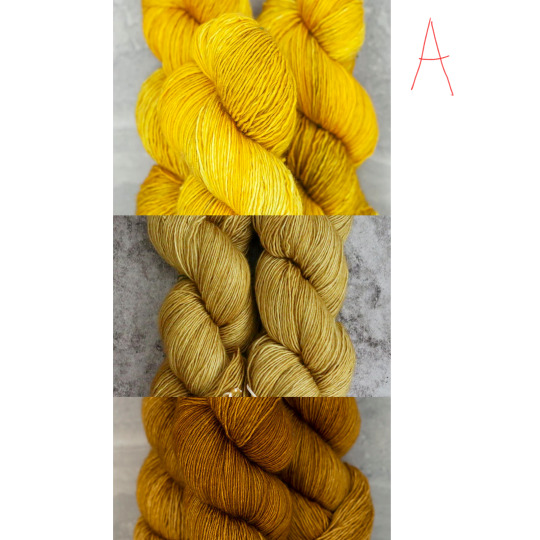

pls reblog for larger sample size thanks
@wolfythewitch this is for your shawl btw :)
#fiber art#fiber arts#yarn#yarnblr#knitblr#knitting#wool#color palette#hand dyed yarn#colorways#wolfythewitch#i like the b combo better#but i really want to use the bright yellow
433 notes
·
View notes
Text


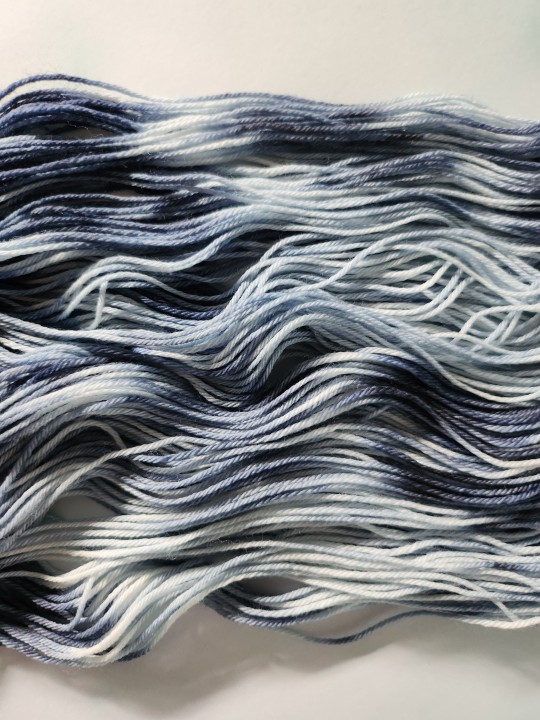

I dyed this to pair with Haunted, and named it Batty.
I dyed these as they were twisted up, so the black and grey would not get to everything... I originally wanted to dye pastels into the white spots, but liked how smokey this felt.
50g sock yarn mini.
#hand dyed yarn#yarn#wool#fiber arts#crafts#knitting#crochet#knitblr#halloween yarn#handdyed#indie yarn#sock yarn
252 notes
·
View notes
Note
How did cotton win over linen anyway?
In short, colonialism, slavery and the industrial revolution. In length:
Cotton doesn't grow in Europe so before the Modern Era, cotton was rare and used in small quantities for specific purposes (lining doublets for example). The thing with cotton is, that's it can be printed with dye very easily. The colors are bright and they don't fade easily. With wool and silk fabrics, which were the more traditional fabrics for outer wear in Europe (silk for upper classes of course), patterns usually needed to be embroidered or woven to the cloth to last, which was very expensive. Wool is extremely hard to print to anything detailed that would stay even with modern technology. Silk can be printed easily today with screen printing, but before late 18th century the technique wasn't known in western world (it was invented in China a millenium ago) and the available methods didn't yeld good results.
So when in the late 17th century European trading companies were establishing trading posts in India, a huge producer of cotton fabrics, suddenly cotton was much more available in Europe. Indian calico cotton, which was sturdy and cheap and was painted or printed with colorful and intricate floral patters, chintz, especially caught on and became very fashionable. The popular Orientalism of the time also contributed to it becoming fasionable, chintz was seen as "exotic" and therefore appealing.
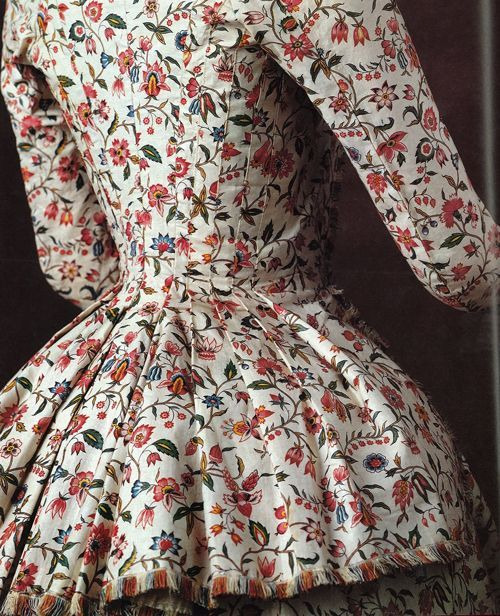
Here's a typical calico jacket from late 18th century. The ones in European markets often had white background, but red background was also fairly common.
The problem with this was that this was not great for the business of the European fabric producers, especially silk producers in France and wool producers in England, who before were dominating the European textile market and didn't like that they now had competition. So European countries imposed trade restrictions for Indian cotton, England banning cotton almost fully in 1721. Since the introduction of Indian cottons, there had been attempts to recreate it in Europe with little success. They didn't have nearly advanced enough fabric printing and cotton weaving techniques to match the level of Indian calico. Cotton trade with India didn't end though. The European trading companies would export Indian cottons to West African market to fund the trans-Atlantic slave trade that was growing quickly. European cottons were also imported to Africa. At first they didn't have great demand as they were so lacking compared to Indian cotton, but by the mid 1700s quality of English cotton had improved enough to be competitive.
Inventions in industrial textile machinery, specifically spinning jenny in 1780s and water frame in 1770s, would finally give England the advantages they needed to conquer the cotton market. These inventions allowed producing very cheap but good quality cotton and fabric printing, which would finally produce decent imitations of Indian calico in large quantities. Around the same time in mid 1700s, The East Indian Company had taken over Bengal and soon following most of the Indian sub-continent, effectively putting it under British colonial rule (but with a corporate rule dystopian twist). So when industrialized English cotton took over the market, The East India Company would suppress Indian textile industry to utilize Indian raw cotton production for English textile industry and then import cotton textiles back to India. In 1750s India's exports were mainly fine cotton and silk, but during the next century Indian export would become mostly raw materials. They effectively de-industrialized India to industrialize England further.
India, most notably Bengal area, had been an international textile hub for millennia, producing the finest cottons and silks with extremely advance techniques. Loosing cotton textile industry devastated Indian local economies and eradicated many traditional textile craft skills. Perhaps the most glaring example is that of Dhaka muslin. Named after the city in Bengal it was produced in, it was extremely fine and thin cotton requiring very complicated and time consuming spinning process, painstakingly meticulous hand-weaving process and a very specific breed of cotton. It was basically transparent as seen depicted in this Mughal painting from early 17th century.
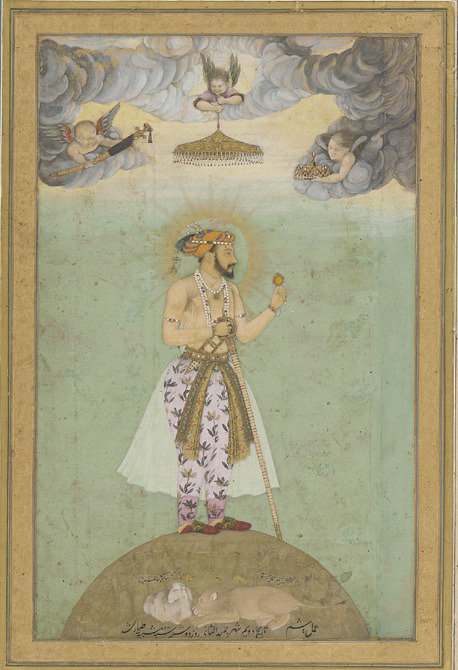
It was used by e.g. the ancient Greeks, Mughal emperors and, while the methods and it's production was systematically being destroyed by the British to squash competition, it became super fashionable in Europe. It was extremely expensive, even more so than silk, which is probably why it became so popular among the rich. In 1780s Marie Antoinette famously and scandalously wore chemise a la reine made from multiple layers of Dhaka muslin. In 1790s, when the empire silhouette took over, it became even more popular, continuing to the very early 1800s, till Dhaka muslin production fully collapsed and the knowledge and skill to produce it were lost. But earlier this year, after years lasting research to revive the Dhaka muslin funded by Bangladeshi government, they actually recreated it after finding the right right cotton plant and gathering spinners and weavers skilled in traditional craft to train with it. (It's super cool and I'm making a whole post about it (it has been in the making for months now) so I won't extend this post more.)


Marie Antoinette in the famous painting with wearing Dhaka muslin in 1783, and empress Joséphine Bonaparte in 1801 also wearing Dhaka muslin.
While the trans-Atlantic slave trade was partly funded by the cotton trade and industrial English cotton, the slave trade would also be used to bolster the emerging English cotton industry by forcing African slaves to work in the cotton plantations of Southern US. This produced even more (and cheaper (again slave labor)) raw material, which allowed the quick upward scaling of the cotton factories in Britain. Cotton was what really kicked off the industrial revolution, and it started in England, because they colonized their biggest competitor India and therefore were able to take hold of the whole cotton market and fund rapid industrialization.
Eventually the availability of cotton, increase in ready-made clothing and the luxurious reputation of cotton lead to cotton underwear replacing linen underwear (and eventually sheets) (the far superior option for the reasons I talked about here) in early Victorian Era. Before Victorian era underwear was very practical, just simple rectangles and triangles sewn together. It was just meant to protect the outer clothing and the skin, and it wasn't seen anyway, so why put the relatively scarce resources into making it pretty? Well, by the mid 1800s England was basically fully industrialized and resource were not scarce anymore. Middle class was increasing during the Victorian Era and, after the hard won battles of the workers movement, the conditions of workers was improving a bit. That combined with decrease in prices of clothing, most people were able to partake in fashion. This of course led to the upper classes finding new ways to separate themselves from lower classes. One of these things was getting fancy underwear. Fine cotton kept the fancy reputation it had gained first as an exotic new commodity in late 17th century and then in Regency Era as the extremely expensive fabric of queens and empresses. Cotton also is softer than linen, and therefore was seen as more luxurious against skin. So cotton shifts became the fancier shifts. At the same time cotton drawers were becoming common additional underwear for women.
It wouldn't stay as an upper class thing, because as said cotton was cheap and available. Ready-made clothing also helped spread the fancier cotton underwear, as then you could buy fairly cheaply pretty underwear and you didn't even have to put extra effort into it's decoration. At the same time cotton industry was massive and powerful and very much eager to promote cotton underwear as it would make a very steady and long lasting demand for cotton.
In conclusion, cotton has a dark and bloody history and it didn't become the standard underwear fabric for very good reasons.
Here's couple of excellent sources regarding the history of cotton industry:
The European Response to Indian Cottons, Prasannan Parthasarathi
INDIAN COTTON MILLS AND THE BRITISH ECONOMIC POLICY, 1854-1894, Rajib Lochan Sahoo
#i have fixed the wording in the beginning so it doesn't sound like i'm saying cotton in general dyed better than wool or silk#answers#fashion history#historical fashion#history#textile history#dress history#historical clothing#indian history#colonial history#indian textiles#cotton#slavery
2K notes
·
View notes
Text

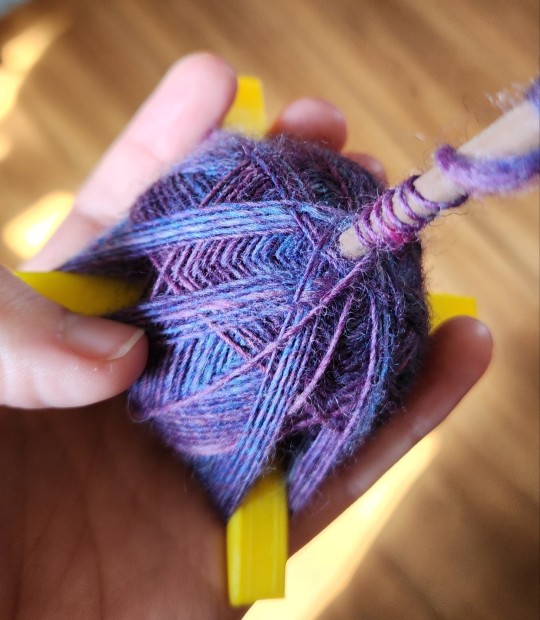
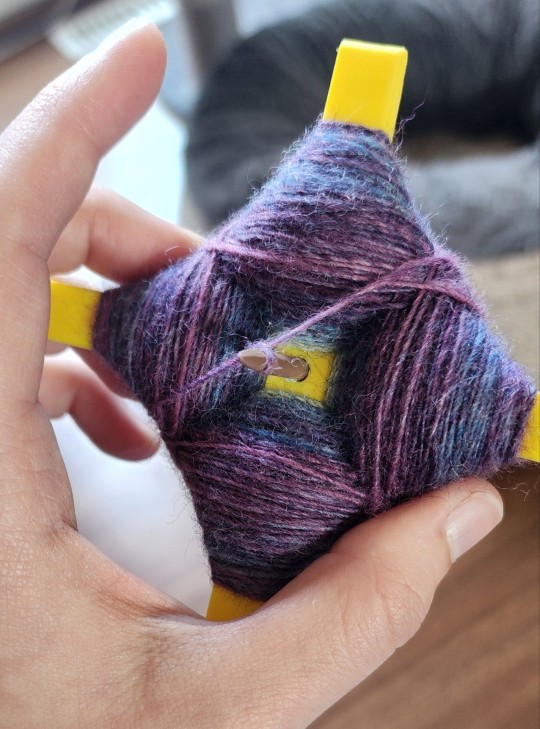

Finished spinning the single from my dye workshop and now onto plying!
#no I'm not avoiding recounting my warp stop saying that#hand dyed#dot dye#handspun#turkish spindle#craftblr#yarn#fibre#wool
131 notes
·
View notes
Text



had a braid of Polwarth that needed over-dyed. I basically just followed the given colorway, but saturated and covered all of the fiber using those original colors. Pink, orange, yellow, two greens, two purples, and a brown. 🤞🤞🤞
Additionally, had a couple of one-off braids in stash that I want to both soften a bit, and bulk up for more yarn. Enter, merino. Dyeing a couple of bumps of fiber in what I hope ends up being complementary shades to blend and combined with those braids. I think the blue will be fine but I worry about the saturation on the peachy orange...but if it's too much it'll just be an excuse to try again 😂
70 notes
·
View notes
Text
people who haven’t read fire and blood love to compare house of the dragon to the version of it they’ve made up in their heads that fixes everything they don’t like about the show and/or sucks shit and shouldn’t be trusted. always feel this when people are like ‘oh show alicent is a victim but book alicent is indefensible’ is she? do you know her? is she really any eviller or more socialclimbing than any other noblewoman in the series? what’s a bit of ordering your little granddaughter to slit the king’s throat in the political intrigue and murder series. grow up
#she’s not indefensible because i’m going to defense her. she was right targaryens ARE weird#asoiaf#a song of ice and fire#house of the dragon#hotd#alicent hightower#people will yap all day about how much they love evil sinister women until she’s trying to chop a kid to bits#if you just like the aesthetic of evil women say that i want dyed in the wool crazy evil
318 notes
·
View notes
Text
I'm not over the symbolism with Black sheep's name. They took the daughter of "the Wolf" and tried to defang her by calling her a sheep, a docile individual who follows without asking questions.
And yet they called her a black sheep. A misfit, an outcast, one who stands out.
And she was : only child on the island, a promising thief before even starting her training, and eventually being "in a league of her own".
It's almost a self-fulfilling prophecy. Why were they surprised when the one they'd marked as different from the flock ended up rebelling against it completely?
#other interesting sheep-related idioms : dyed-in-the wool (what VILE certainly hoped she'd be for them : the strongest possible follower)#pull the wool over someone's eyes : what they were doing to carmen as they raised her believing stealing was a game#carmen sandiego 2019#carmen sandiego#csweekly
316 notes
·
View notes
Text
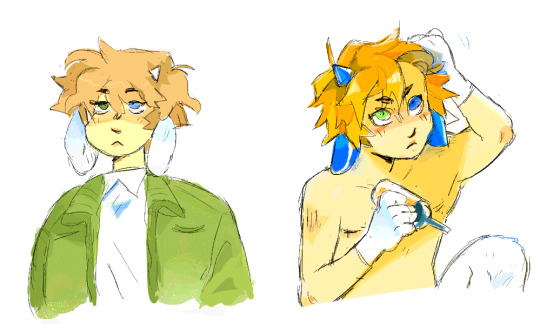
🐏
#hoof draws#bos ocs#fucking around with 'what if bunny dyes his hair'#since white/light brown probably makes more sense as a natural satyr hair color#<-- some show sheep also have their wool dyed bright orange b4 shows too to accentuate the face#so it might be a common fashion trend in satyr culture to dye your hair orange#/otherwise just seeing orange hair as a desirable trait#bov ocs
335 notes
·
View notes
Text




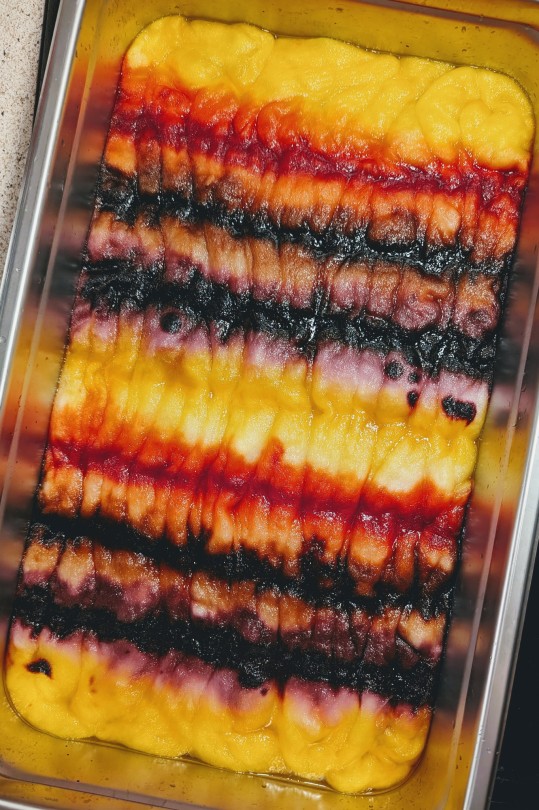

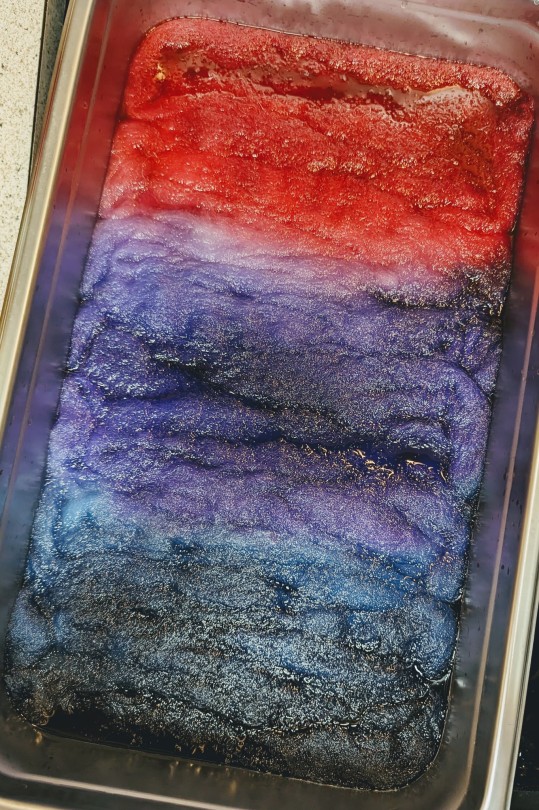
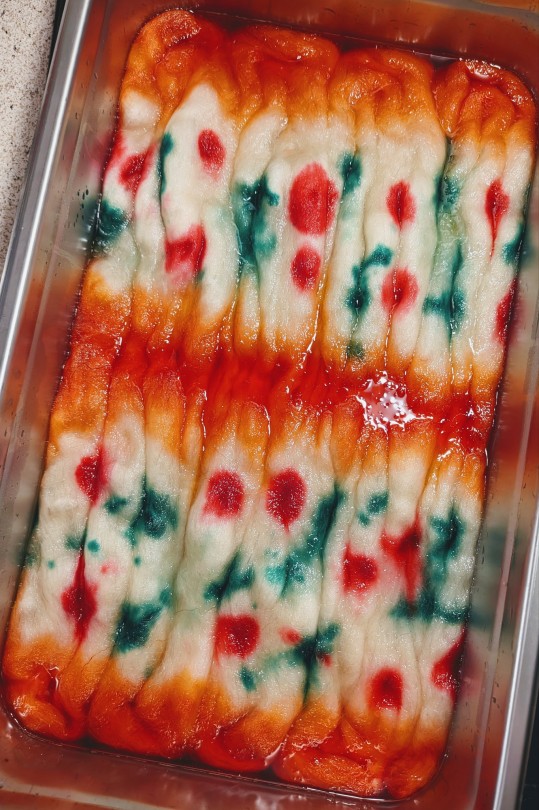
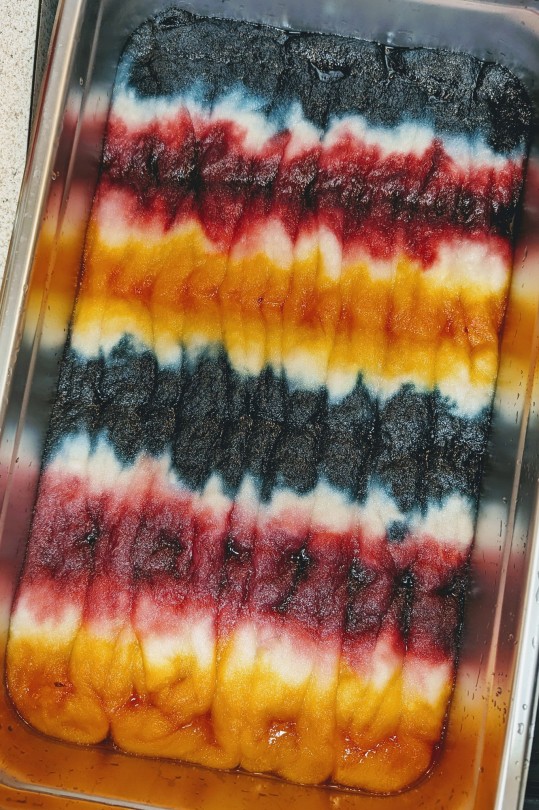

I've been IN the dye pots y'all. New braids dropping in my shop very soon. I have so much wool to spin right now. It's literally all over the house. We've way over capacity. I need to finish the lace weight spin on my EEW and my spindle spin and then maybe I'll do a poll on what to spin next, because I am currently SPOILED for choice. and. famously bad at choosing 😂
#dyeing#hand dyeing#hand dyed#hand dyed wool#wool#spinning fiber#handspinning#fiber arts#fiber crafts#allonsybadwolf#my dyeing
96 notes
·
View notes